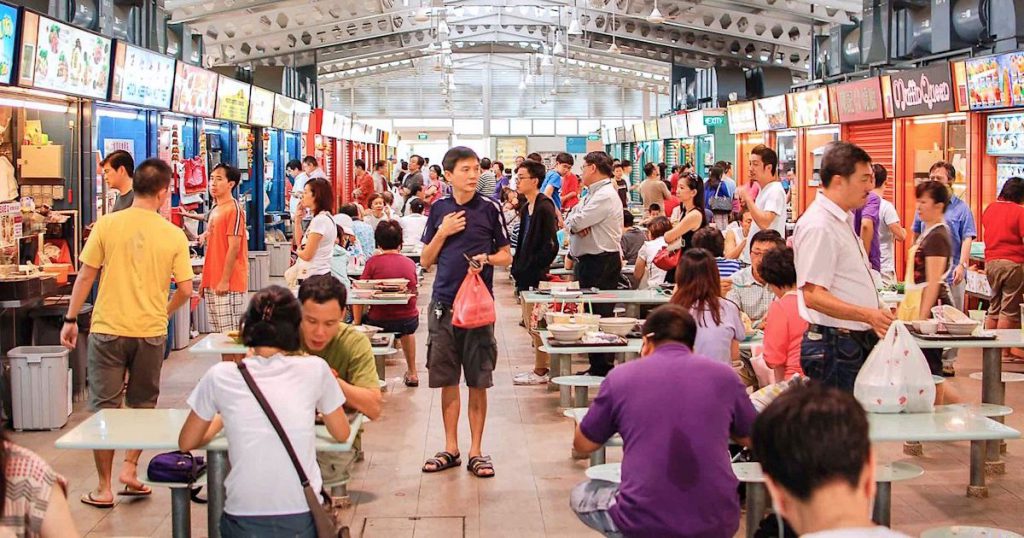After two years, Singapore’s hawker culture has made it into the Intangible Cultural Heritage of Humanity list under the United Nations Educational, Scientific and Cultural Organisation (UNESCO).
It joins the ranks of Indonesia’s angklung musical tradition, China’s Shadow Puppetry, and over 460 other items.
According to the National Environment Agency (NEA), the list seeks to raise awareness of the importance of the practices and expressions of diverse cultures.
The inclusion of Singapore’s UNESCO submission had to go through a 12-member evaluation body, which deemed that it had fulfilled all the criteria required.
In a Facebook post, Prime Minister Lee Hsien Loong thanked Singapore’s “generations of hawkers for nourishing a nation’s stomach and spirits.”
However, despite clinching a spot on UNESCO’s prestigious list, Singapore’s hawker culture is unfortunately at a high risk of slowly dying out.
Is Hawker A Dying Trade?

In this day and age, it’s getting harder for the younger generation to take up a job as a hawker.
There are currently about 6,000 hawkers spread over 110 hawker centres, and the national median age for hawkers is at 59 years old.
With retirement around the corner, this leaves existing hawkers with a dilemma: who can they pass on their stall to?
Recently, the 60-year-old Nam Seng Noodle House was forced to shut down, citing an inability to stay afloat due to a low footfall brought about by the circuit breaker and safe distancing measures.

Even though the Covid-19 pandemic contributed heavily to the store’s shutdown, issues such as a lack of manpower and available workers were also factors in the decision.
With more hawker stalls shutting down in recent times, NEA has stepped in to prevent Singapore’s hawker culture from dying.
This November, it introduced a new scheme that lets non-subsidised, retiring hawker stallholders pass on their stalls to non-family members and non-relatives.
These older hawkers will be paired with new entrants for “succession” so that their recipes and culinary skills can be passed on, while allowing them to mentor new hawkers on how to best manage their stalls.
“The idea is to facilitate the transmission of recipes, skills and practices which might be lost if the veteran exits the scene without a successor,” said Dr Amy Khor, Senior Minister of State for Sustainability and the Environment.
This raises the question of whether younger Singaporeans are unwilling to take up the job as a traditional hawker.
The Rise Of Young Hawkers

Despite the low numbers of Singaporeans taking up a job as a traditional hawker, a sizeable number of millennials have taken to starting their own hawker stalls.
The food from these stalls however, come with a twist. Nosh from stalls opened by young “hawkerpreneurs” usually feature something out of the norm.
For example, A Noodle Story serves up Singapore-style ramen. The store was set up by millennials Gwern Khoo and Ben Tham, and has grown to be wildly popular.

In February 2013, the duo set up a humble store at the first floor of Amoy Street Food Centre. By 2018, it launched its flagship franchise outlet in Causeway Bay, Hong Kong.
Young entrepreneurs have even managed to modernise the traditional Kopi and toast.
A trio of siblings – Jack Sai, 36; and twins Faye and Anna, 33 are the third-generation running Coffee Break.
Their menu offers a rather diverse variety of artisanal coffee flavours. The team also develops homemade spreads for their toast in quirky flavours such as black sesame, matcha coconut creme, and taro creme.
Many other aspiring hawkers have entered the game, from ‘Ah Bengs’ selling rice bowls to a 29-year-old Har Cheong Kai hawker.
Should Singaporeans then expect all our hawker food to be hipster in nature in the future?
Hawker Food Is Likely To Evolve With Time
Like most products, food also gradually evolves with time.
As Singapore’s first-generation hawkers begin to retire, they are likely to take their recipes and concoctions with them.
Furthermore, more young entrepreneurs will enter the long-established trade, and there is bound to be an impact on Singapore’s hawker culture.
Expecting Singapore’s hawker culture to remain the same 50 years down the road is unrealistic.
However, that does not mean that the hawker food we enjoy today will die out completely.
What we can expect is perhaps a mix of traditional and modern food in hawker centres, much like the rest of Singapore’s landscape and culture.
Featured Image Credit: Tiberiu Ana










